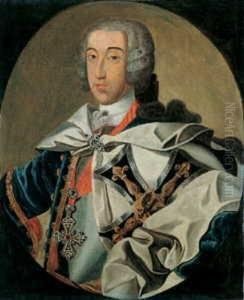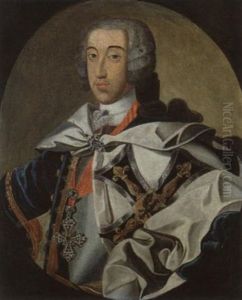Johann Georg Winter Paintings
Johann Georg Winter was a German Baroque painter, primarily known for his work during the 17th century. Born in 1605, Winter's early life and training remain somewhat obscure, but it is believed that he was active in the region that is now southwestern Germany. His work is often associated with the Swabian school of painting, which was centered in areas such as Augsburg and Ulm, although documentation of his exact movements and training is limited.
Winter's artistic career unfolded during a tumultuous period in European history, marked by events such as the Thirty Years' War (1618-1648), which had a profound impact on the German states. Despite the challenges of the era, Winter managed to secure commissions and create works that captured the Baroque sensibility of the time, characterized by dynamism, rich coloration, and dramatic contrasts of light and shadow.
He is particularly noted for his religious works, which were typical of the Baroque period, as the Counter-Reformation spurred a demand for art that was emotionally engaging and served as a tool for religious instruction and inspiration. Winter's paintings often featured biblical scenes and were intended for both private devotion and church decoration.
Johann Georg Winter's contributions to the Baroque period were significant, and although he may not be as widely recognized as some of his contemporaries, his work remains a testament to the rich artistic culture of 17th-century Germany. Winter passed away in 1676, leaving behind a body of work that continues to be studied and appreciated by art historians and enthusiasts of the Baroque era. His paintings, while not as prolifically reproduced or as famous as those of some other Baroque painters, still offer insight into the religious and aesthetic sensibilities of his time.

